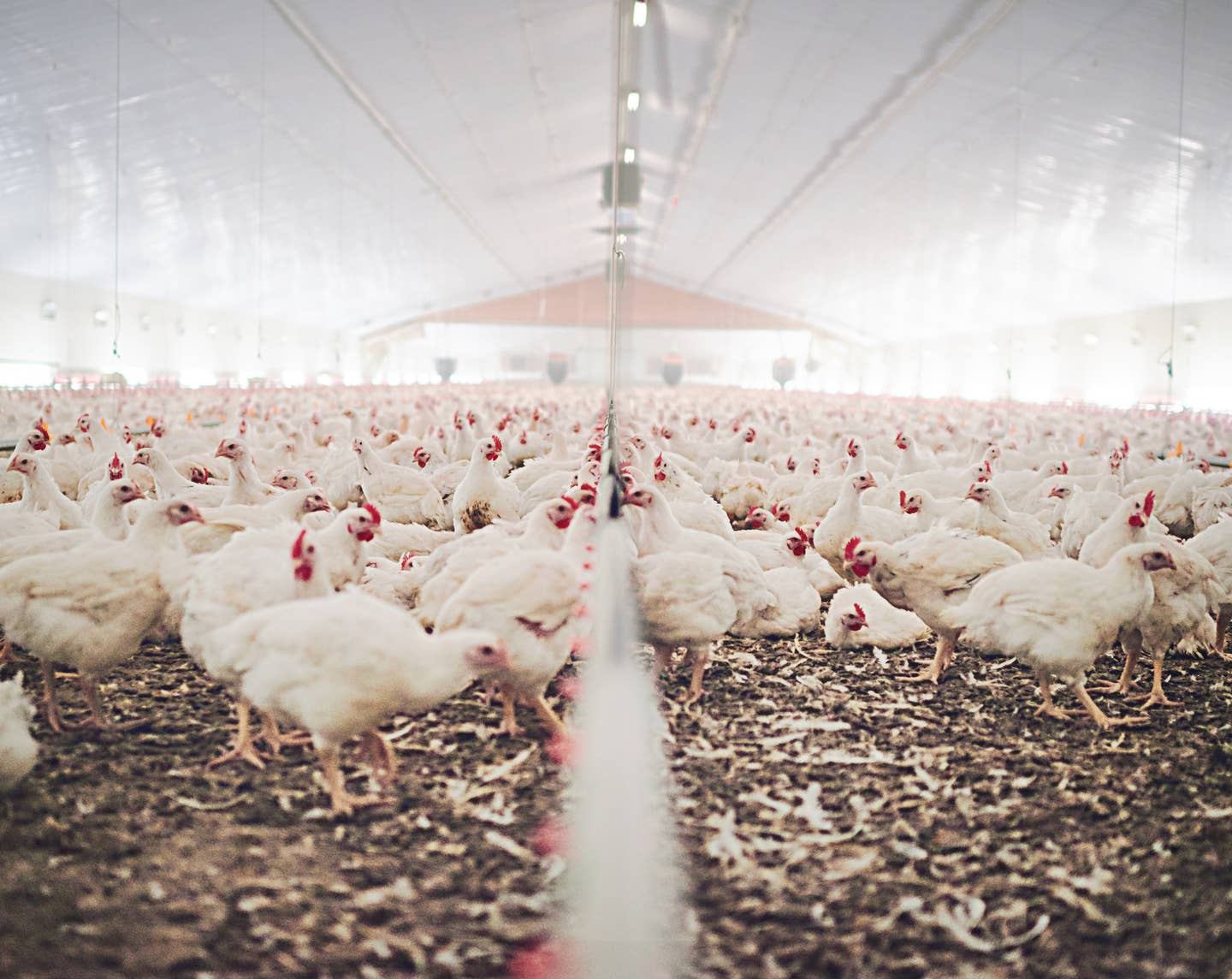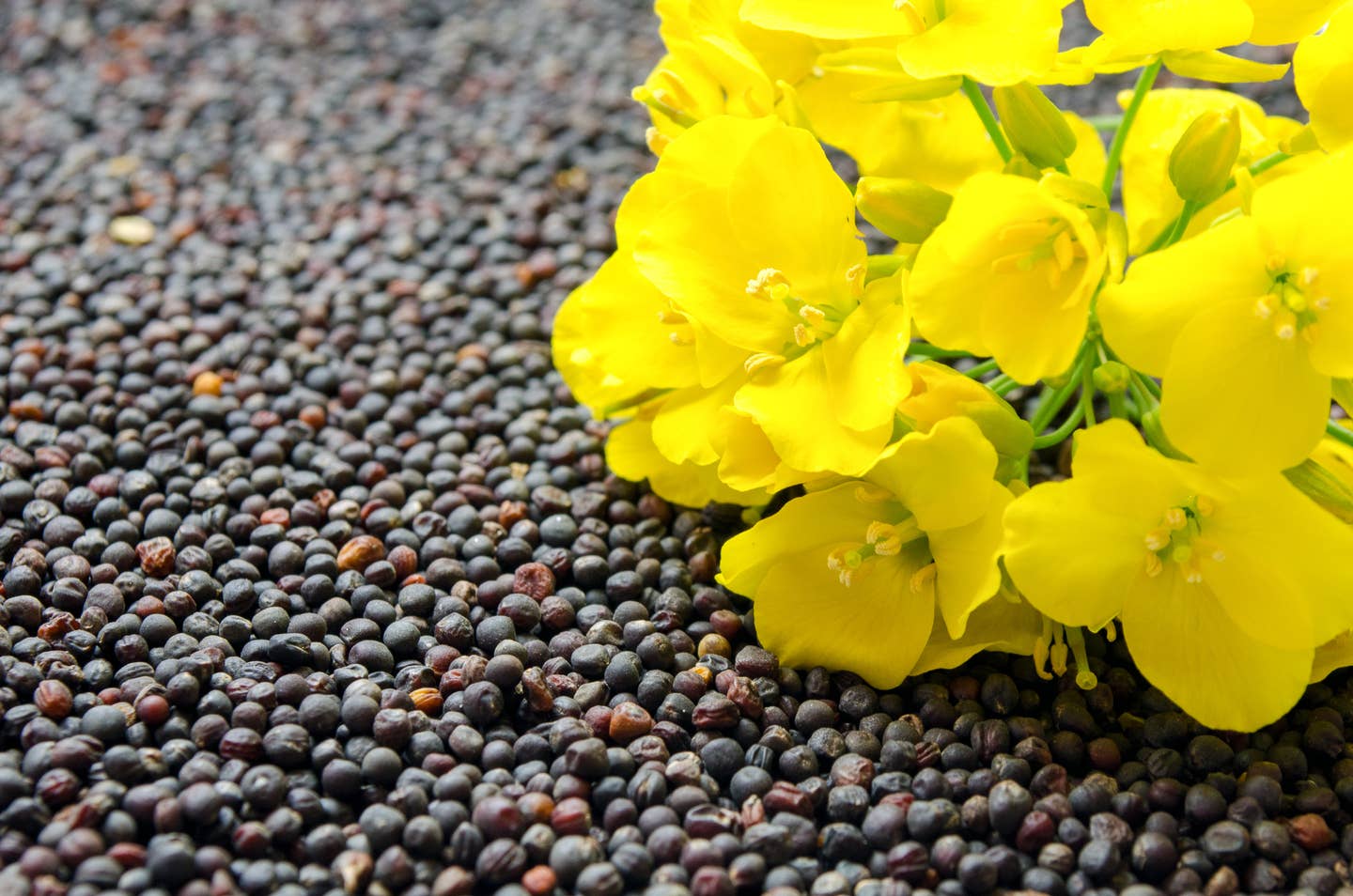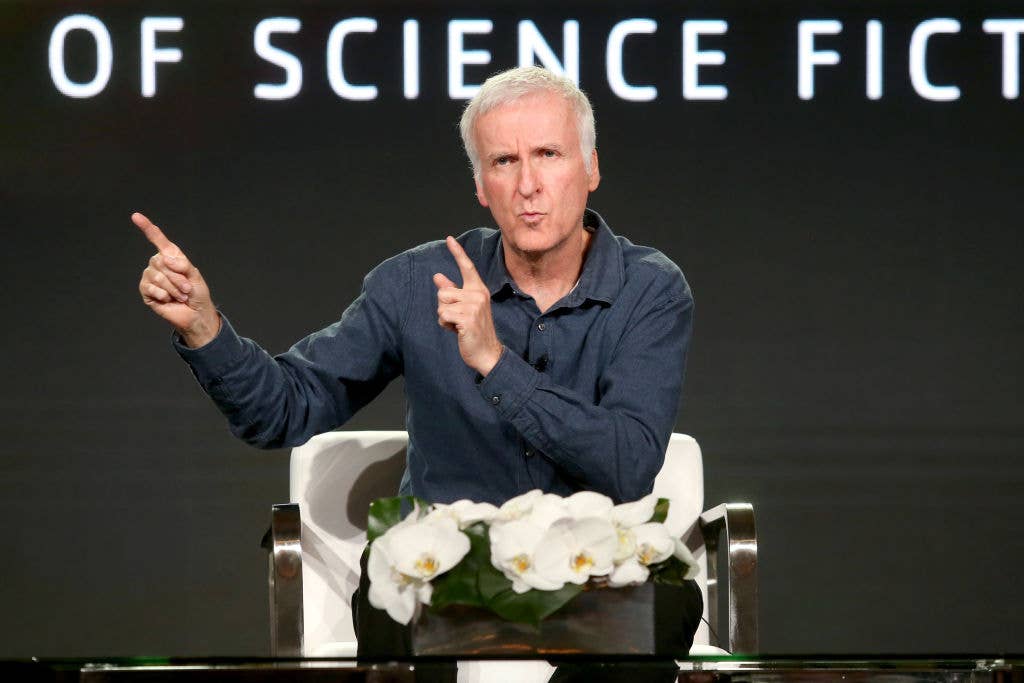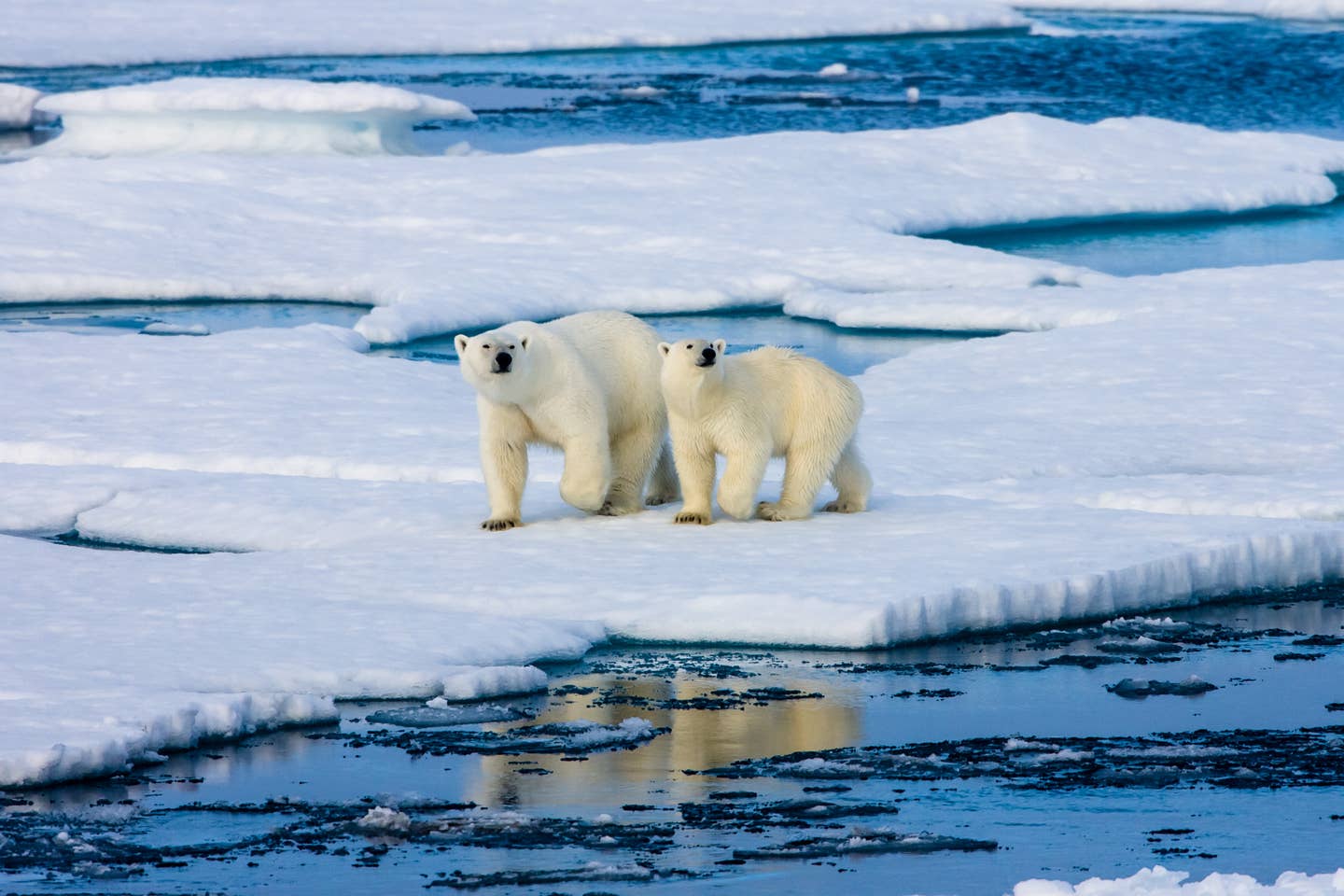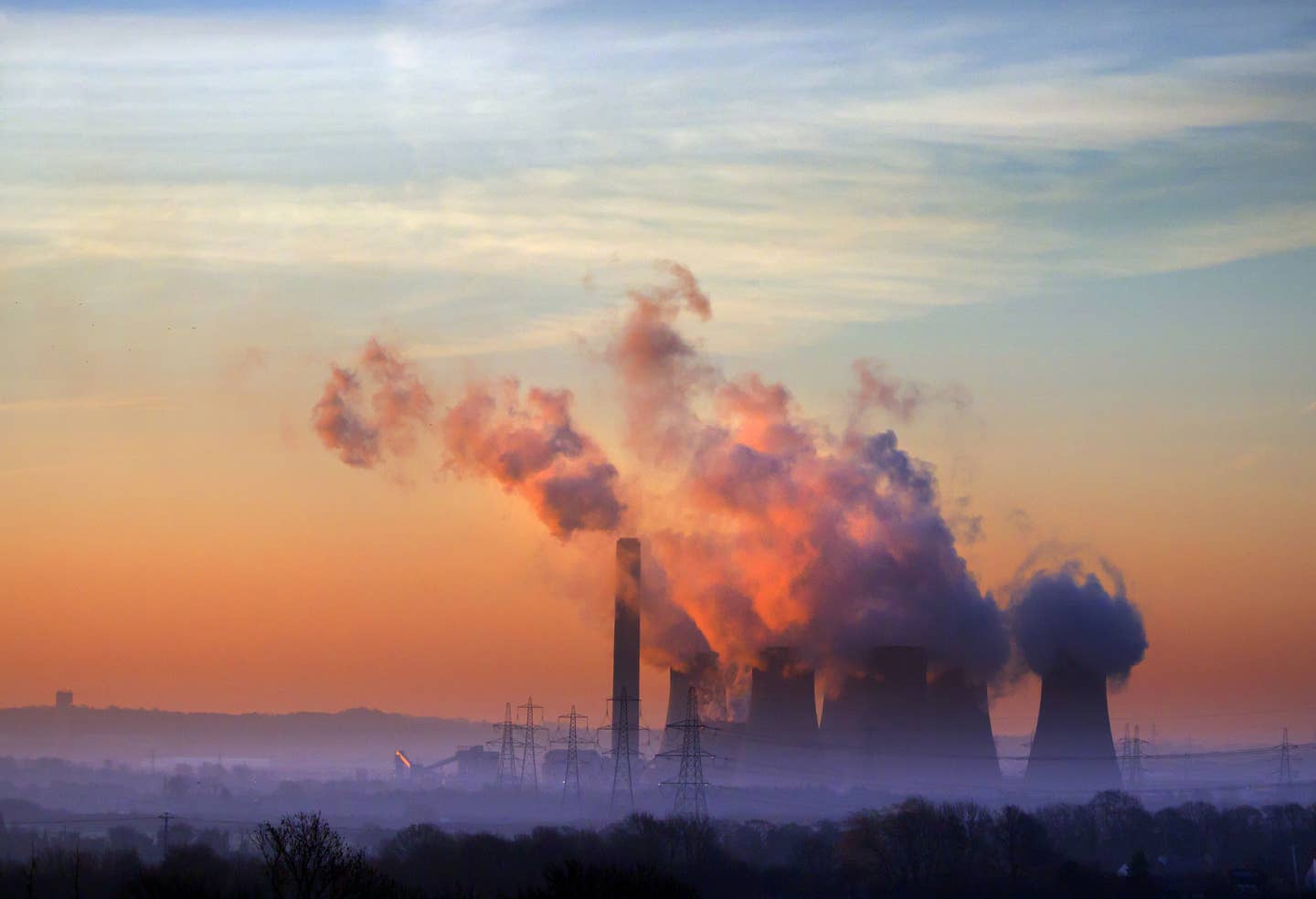
The UN Releases a “Code Red” Report: The Climate Crisis Is Here
The United Nations Intergovernmental Panel on Climate Change (IPCC) just released a new report that reveals climate change is upon us and humanity only has a short window of a few years to dial back the effects of climate change. Otherwise, dramatic climate changes will lead to runaway warming of the planet, threatening to damage our coasts and forests, causing more fires and flooding than we are experiencing now.
The international organization published its most recent report after collecting data about the state of our globe, measuring indicators beyond the physical and visible effects we are witnessing, and urging the need for changes in human behavior. The report found that human beings are directly responsible for the spikes in global temperature linked to the growing frequency of floods, droughts, fires, and heatwaves, as well as the rising sea levels caused by the acceleration of melting of ice caps.
“[The report] is a Code Red for humanity, UN Secretary-General António Guterres said. “The alarm bells are deafening, and the evidence is irrefutable: greenhouse gas emissions from fossil fuel burning and deforestation are choking our planet and putting billions of people at immediate risk.”
Scientists from around the world delivered this scathing report card
The report enlisted 234 scientists across 65 countries to determine the immediate danger of climate change, reviewing more than 14,000 scientific papers to discover the urgency of global intervention. The IPCC conveys through the report that humanity and its government must reduce greenhouse gas emissions immediately to prevent passing the 1.5°C thresholds. The report ties human involvement to the rising temperature, specifically linking animal agriculture, carbon emissions, and unsustainable manufacturing to the dangerous spike, The report concludes that it will take a monumental and swift change to not only reverse the effects but to just stop the rise.
“It really requires unprecedented transformational change, rapid and immediate reduction of greenhouse gas emissions to net-zero by 2050,” Ko Barrett, the former vice-chair of the IPCC, told CNN. “The idea that there is still a pathway forward is a point that should give us some hope.”
The IPCC publication was released prior to the upcoming 2021 United Nations Climate Change Conference (COP26), which will be hosted in Glasgow, Scotland. The climate summit will gather 197 world leaders to collectively discuss how to handle climate change, and fix the exponentially worsening crisis. The report, which contains nearly 4,000 pages, precedes two supplemental reports that will be published next year. One of the two upcoming reports will assemble solutions brought forward by the COP26 summit.
“Nobody is safe and it’s getting worse faster. We must treat climate change as an immediate threat,” Executive Director of the UN Environmental Program Inger Andersen said “It’s time to get serious because every tonne of CO2 adds to global warming.”
A Shift to Plant-Based to Help Fight Climate Change
Vegan climate activist Great Thunburg responded to the IPCC report claiming that world leaders can no longer ignore the dangerous impacts of climate change. Thunberg has highlighted the dangers of current food production and industrial practices occurring nationwide to maintain an unsustainable form of consumption.
“According to the new IPCC report, the carbon budget that gives us the best odds of staying below 1.5°C runs out in less than five and a half years at our current emissions rate,” Thunberg tweeted. “Maybe someone should ask the people in power how they plan to ‘solve’ that?”
Recently, the activist released a documentary film entitled #ForNature to highlight how animal agriculture is often glazed over during climate talks. The film released in partnership with animal-rights organization Mercy for Animals tackles to direct issue that animal agriculture brings to the world. In the documentary, Thunberg explains that if everyone adopted a plant-based diet, humanity would save up to 8 billion tons of carbon dioxide annually. She goes on to share that approximately 30 percent of the world’s ice-less land is used for animal agriculture and 33 percent of all cropland is occupied to grow food for animals. Her suggestion to adopt plant-based eating would save 76 percent of the landmass across the world.
What we can do: Cut animal products from our diet, since farming is tied to CO2
Researchers at Oxford University conducted an intensive study, analyzing nearly 40,000 farms in 119 countries, to examine how animal agriculture relates to the dangerous rise in carbon emissions. Releasing a report in 2018 that spanned five years, the researchers discovered that the global meat and dairy industries are directly responsible for 60 percent of greenhouse gas emissions. Beyond that, the study revealed that if individuals cut animal products from their diets, consumers could decrease their carbon footprint by 73 percent.
“A vegan diet is probably the single biggest way to reduce your impact on planet Earth, not just greenhouse gases, but global acidification, eutrophication, land use, and water use,” the study’s lead author Joseph Poore said.
Often consumers avoid taking individual action when discussing the urgent dangers of climate change. For one, people often feel reluctant to change their diets due to a solidified idea of tradition, especially regarding the food industry. With the climate crisis at humanity’s doorsteps, The Beet compiled a shortlist of how to start eating for the environment including a simple change to plant-based milk and choosing pea protein to maintain nutritional value.
Recently, the UN stated that the only possible route to a sustainable food system is if first-world countries drop meat from their diets. By simply reducing the amount of meat consumption, the world would drastically lower the amount of carbon and methane emissions as well as water and land usage. Iconic primatologist also revealed her stance regarding animal agriculture and meat production, highlighting the large impact this single change could have.
“If we would just stop eating all of this meat, the difference would be huge because all of these billions of farm animals…kept in concentration camps to feed us, and, you know, whole environments are wiped out to grow the grain to feed them,” environmentalist Jane Goodall said. “Masses of fossil fuel are used to get the grain to the animals, the animals to the abattoir, the meat to the table. Masses of water, which is in such short supply and drying in some areas, is used to get vegetable-to-animal protein. And, finally, they’re all producing gas in their digestion and that’s methane, and that is a very virulent greenhouse gas.”
The report argues that every individual’s carbon footprint can be lowered if people begin to address the negative consequences stemming from transportation, over-consumption, and excessive food waste. The IPCC report is a wake-up call for humanity, promoting the swift push to sustainable practices including public or electric transportation, reduced consumption, and adopting a more plant-forward diet. The IPCC Working Group I Co-Chair Valerie Masson-Delmotte highlighted that there is no more room for mistake or delay, stating that the “role of human influence on the climate system is undisputed.” and its dangerous effects are on humanity’s doorstep.
Next month's climate summit will bring together the world's leaders
President Joe Biden announced his new platform to tackle climate change and reduce emissions from vehicles in the United States. A White House statement indicated that President Biden will sign an Executive Order requiring half of all new vehicles sold in the US to be zero-emissions by 2030.
“Strong vehicle standards protect our communities from unnecessary air pollution and fuel costs and address the largest source of greenhouse gas emissions in the U.S.,” Executive Director of the U.S. Climate Alliance Julie Cerqueira said. “There’s much more work to do, but these new proposed rules are a critical step forward and will benefit our health, economy, and planet.”
Highlighting another environmentally detrimental industry, the president's announcement is part of the administration's greater effort to reach zero emissions by 2050. The president's promise, however, is likely to be delayed, because, in order to completely neutralize emissions, the president will have to fully ban fossil-fuel-powered cars by 2035, only five years following the 50 percent target. With the climate crisis becoming ever more evident, Biden's announcement may need adjustment to meet the IPCC's urgent concerns.
Bottom Line: Climate change is here but we can help by going plant-based
What can we do to help combat climate change, other than buying zero-emissions cars when we are able to do so, and write to our legislators to support the initiative? Eat more plant-based and less red meat or dairy, since animal agriculture is one of the largest contributors of greenhouse gasses created by humans.
Top 10 Sources of Plant-Based Protein According to a Nutritionist
1. Seitan
Protein: 21 grams in ⅓ cup (1 ounce) Seitan isn’t as popular as other proteins, but it should be! Made from wheat gluten, its texture resembles ground meat. It’s often used in pre-made veggie burgers or meatless nuggets. Seitan has a savory taste, like mushrooms or chicken, so it works well in dishes that call for an umami flavor. With a hearty texture, seitan can be the star of practically any vegan main dish. Add it to stir-fries, sandwiches, burritos, burgers, or stews. Like tofu, seitan will take on the flavor of any marinade or sauce.
2. Tempeh
Protein: 16 grams in 3 ounces If you like a protein with a bit of bite, add tempeh to your list. Made from fermented soybeans, tempeh has a slightly nutty flavor and is pressed into a block. Most varieties include some sort of grains, such as barley or millet. Not only is tempeh a plant-based source of protein, but the fermentation process also creates good-for-your-gut probiotics. You can cut tempeh right off the block and use it as the base for a sandwich or pan-fry it with some sauce. Or, crumble, heat, and make it the star of your next taco night.
3. Lentils
Protein: 13 grams in ½ cup cooked Lentils come in multiple varieties--red, yellow, green, brown, black. Regardless of the type lentils are small but mighty nutritional powerhouses. They pack a good amount of protein as well as iron, folate, and fiber. When cooked, brown lentils retain their texture and can be the base for a grain bowl or make a hearty substitute for ground meat in meatballs, lasagna, tacos or Bolognese. Red lentils are a bit softer and make a nice add-in for a hearty soup, chili, or stew.
4. Hemp Seeds
Protein: 10 grams in 3 tablespoons Hemp seeds are a tender and nutty seed, derived from the hemp plant. They contain good amounts of omega-3s, iron, folate, magnesium, phosphorus, and manganese. They are also a solid source of both soluble and insoluble fiber, which helps to keep your digestive tract healthy and humming. Because they pack a double whammy of protein and healthy fats, hemp seeds can help satisfy hunger, preventing those embarrassing stomach growls as you slog your way to your lunch break. Add them to your morning smoothie or sprinkle them on top of yogurt, oatmeal, or even a salad.
5. Tofu
Protein: 9 grams in 3 ounces (⅕ of a block) Made from coagulated soybeans, tofu is the most popular plant-based protein. Soy is one of the only meatless "complete" proteins, meaning that it contains all of the essential amino acids that the body can’t make but needs for muscle and immune function. With 15% of your daily calcium needs, tofu is also a good replacement for dairy.
6. Edamame
Protein: 9 grams of protein in ½ cup This sushi appetizer is a nutrient powerhouse, so eat it anytime. Edamame is really just another name for soybeans in their pods. Let’s list off some stats--a small ½-cup serving of edamame has 9 grams of protein, 15% of your daily vitamin C, 10% of your daily iron and 16% of your daily fiber. Keep a bag of edamame in your freezer to serve as a fun-to-eat side dish or opt for the shelled variety to toss into salads or a grain bowl.
7. Quinoa
Protein: 8 grams per cup (cooked) Quinoa is an ancient grain and since it's gluten-free a great choice for anyone avoiding gluten. Add it to your burger recipe to create filling texture, or instead of meat in your taco or burrito. Quinoa is among the healthiest foods on the planet, delivering phytonutrients that have anti-inflammatory qualities, so keep it in your pantry for any meal that needs a filling grain. Just remember to soak it and rinse before cooking to get rid of any bitter taste.
8. Black Beans
Protein: 7 grams in ½ cup (canned) Eating beans on the regular might as well be a prerequisite for a plant-based diet. Not only are canned black beans inexpensive, but they also contribute 10% of your daily iron and 25% of your daily fiber to your diet. For less than $1 a can, beans can be the star of tacos, quesadillas, salads, soups, burgers, or dips.
9. Amaranth
Protein: 6 grams in ⅔ cup (cooked) Chances are you’ve never cooked amaranth. But you should, since this tiny, gluten- free grain is packed with almost 30% of your daily fiber and 20% of your daily iron. Cook it like a traditional grain to yield a soft, porridge-like texture. Many people add amaranth to other a hot breakfast cereal mixture, like oats and quinoa. It also pops like popcorn. Toss it in a pot with some oil and wait for it to pop up into a nutritious snack.
10. Peas
Protein: 5 grams in ⅔ cup If peas were one of your most hated veggies as a kid, it’s time to give them another chance. These green beans are a great low-calorie protein to keep in your freezer. Sure, they don’t always taste great when steamed or microwaved (who wants to eat mushy, overcooked peas?), but they do blend well into a yummy puree that can be slathered on toast. To amp up the flavor, add some lemon juice or mint to your mix before you blend.
More From The Beet
